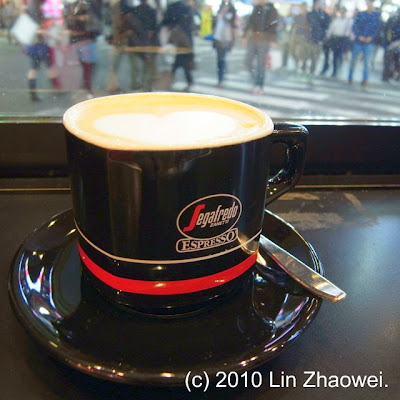I bought the Ricoh GXR 28mm f2.5 today. Finally! Ever since it was announced in March, I had been very curious about this lens. After I bought the GXR in September for my Pakistan trip, I was even more eager to try it out – while the 24-72mm zoom unit gave me a taste of the wonderful features of the GXR, from the many customisable settings to the advanced shooting options, I was never entirely convinced of its image quality at ISO 400 and above. (As a side note, I believe the pictures ST used for my Pakistan article were shot at ISO100 or 200)
I got to try out the 28mm unit when I visited Japan in October, at Ricoh’s Ringcube showroom in Ginza, Tokyo, and I was quite impressed. It was a pre-production model, however.
Last month, the lens was finally released in Japan, and two weeks later, it has arrived in Singapore. I was so excited to hear that my neighbourhood camera store (MS Color at Ang Mo Kio Hub) had it in stock, and I rushed down to the store after I attended a function Wednesday night. Alas, it turned out that I had used up the available funds in my current account because I’d spent a pretty penny on a pair of sunglasses earlier in the day, and I couldn’t pay up! So I paid a S$100 deposit and went there during my lunch time today and snapped it up.
When I slid the unit into my GXR and turned it on, I could immediately feel its tremendous quality. What has impressed me about the 28mm:
- Impressive ISO performance all the way to ISO 3200. Thanks to the large APS-C sized sensor. It easily trumps my 3-year-old Nikon D40X, even though the sensor size is the same.
- Very sharp lens. I was very impressed when I looked at the LCD of the Panasonic GF1 in Japan. With the 28mm on the GXR, I have nothing left to envy.
- Fast AF. Ok it wouldn’t be fair to compare to my Nikon lenses on this, but for a compact camera, the 28mm is very fast and responsive. Definitely good enough for most shooting conditions, except for action/sports.
What could have been better:
- An even faster lens, say f2? (I think f1.4 might be a bit too much to as for in a compact camera)
- 43mm filter size instead? Why on earth does the 24-72mm unit use a 43mm filter while the 50mm and 28mm use 40.5mm?
- A gold ring instead of a red one? Ok that’s just the Nikonian in me. Haha.
The lens was put to use on the very same day, as I attended a long-awaited gathering of my primary school class. It wasn’t exactly a snapfest, as 1) I was late and 2) I think I was better off trying to catch up with the rest. But I got a few good shots, and I think I can expect plenty more for the lens.
More to come!
 |
| Eating dinner while everyone else was finishing dessert… Hehe. |


















































